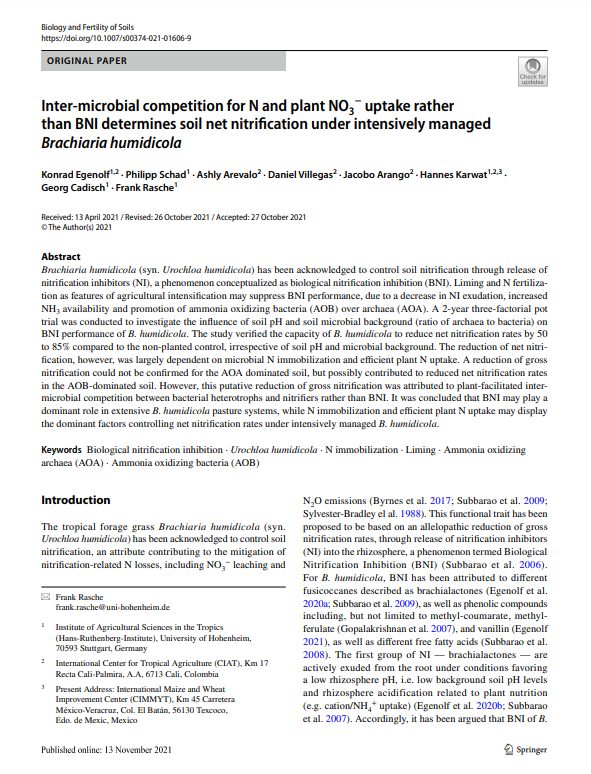Brachiaria humidicola (syn. Urochloa humidicola) has been acknowledged to control soil nitrification through release of nitrification inhibitors (NI), a phenomenon conceptualized as biological nitrification inhibition (BNI).
Liming and N fertilization as features of agricultural intensification may suppress BNI performance, due to a decrease in NI exudation, increased NH3 availability and promotion of ammonia oxidizing bacteria (AOB) over archaea (AOA). A 2-year three-factorial pot trial was conducted to investigate the influence of soil pH and soil microbial background (ratio of archaea to bacteria) on BNI performance of B. humidicola. The study verified the capacity of B. humidicola to reduce net nitrification rates by 50 to 85% compared to the non-planted control, irrespective of soil pH and microbial background.
The reduction of net nitrification, however, was largely dependent on microbial N immobilization and efficient plant N uptake. A reduction of gross nitrification could not be confirmed for the AOA dominated soil, but possibly contributed to reduced net nitrification rates in the AOB-dominated soil. However, this putative reduction of gross nitrification was attributed to plant-facilitated inter-microbial competition between bacterial heterotrophs and nitrifiers rather than BNI. It was concluded that BNI may play a dominant role in extensive B. humidicola pasture systems, while N immobilization and efficient plant N uptake may display the dominant factors controlling net nitrification rates under intensively managed B. humidicola.
Egenolf, Konrad; Schad, Philipp; Arévalo, Ashly; Villegas, Daniel; Arango, Jacobo; Karwat, Hannes; Cadisch, Georg; Rasche, Frank

